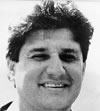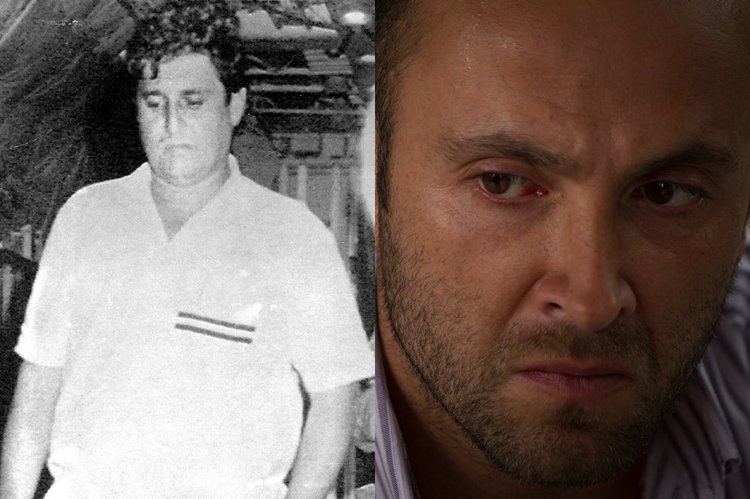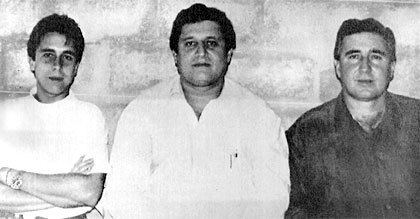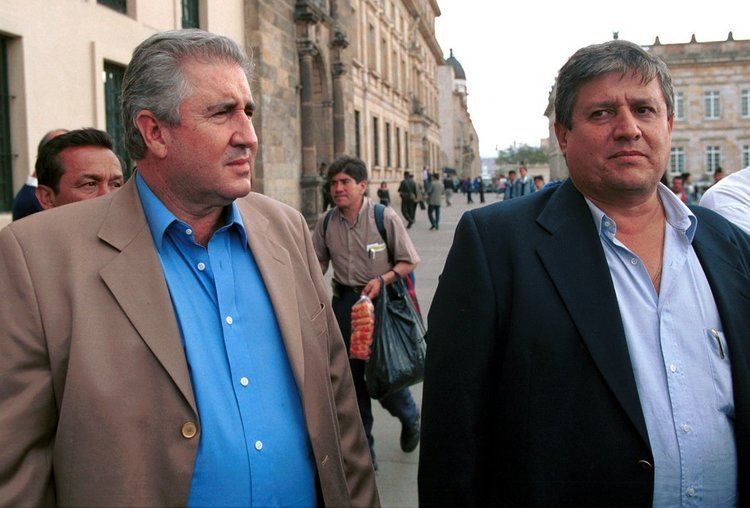Criminal charge Drug trafficking | Spouse(s) Maria lia posada Name Jorge Ochoa | |
 | ||
Full Name Jorge Luis Ochoa Vazquez Born September 30, 1950 (age 75) ( 1950-09-30 ) Medellin, Colombia Criminal status Turned in - Released by decree Similar Fabio Ochoa Vásquez, Juan David Ochoa Vásquez, José Gonzalo Rodríguez Gacha | ||
Popeye relaciona a fabio ochoa con cr menes m s sonados del cartel de medell n
Jorge Luis Ochoa Vásquez (born September 30, 1950) is a former Colombian drug trafficker who was one of the key founding members of the notorious Medellín Cartel in the late 1980s. The cartel's key members were Pablo Escobar, Carlos Lehder, José Gonzalo Rodríguez Gacha, Jorge Ochoa and his brothers Juan David and Fabio.
Contents
- Popeye relaciona a fabio ochoa con cr menes m s sonados del cartel de medell n
- Early years and the founding of the Medelln Cartel
- 19841986
- After 1986
- Popular culture
- References

Early years and the founding of the Medellín Cartel

Jorge Luis Ochoa Vázquez was the son of Fabio Ochoa Restrepo whose family was in the cattle-breeding and family-restaurant businesses until they began trafficking with narcotics during the mid-1970s. In 1976, Ochoa assumed leadership of what was basically an Ochoa family operation. Starting at least in 1978, his Miami contact was Rafael Cardona Salazar. Between 1981 and 1982 an alliance between the Ochoa family, Pablo Escobar, Carlos Lehder, and Rodríguez Gacha strengthened into what eventually became known as the Medellín Cartel. The traffickers cooperated in the manufacturing, distribution and marketing of their cocaine. In 1981, the kidnapping of Ochoa’s sister, Martha Nieves Ochoa Vasquez, by the Colombian guerrilla organization M-19 consolidated their alliance. The traffickers formed a group known as Muerte a Secuestradores, ("Death to Kidnappers") announcing the imminent execution of any guerrilla kidnappers. After being threatened with reprisals, Martha Nieves was released by M-19 unharmed several months later.

John Jairo Velásquez ("Popeye"), one of the main paid killers of Pablo Escobar Gaviria, argued in an interview that Jorge Luis Ochoa Vázquez was actually the boss of Pablo Escobar Gaviria.
1984–1986
On April 30, 1984, Colombian Minister of Justice Rodrigo Lara Bonilla, who had crusaded against the Medellín Cartel, was assassinated by a gang of motorcycle thugs. President Belisario Betancur who had previously opposed extradition of drug traffickers to the United States, announces "We will extradite Colombians." Carlos Lehder was the first to be put on the list. The crackdown forced Jorge Ochoa, Escobar and Rodriguez Gacha to flee to Panama for several months. While in Panama, Ochoa and Pablo Escobar met with former Colombian president Alfonso Lopez Michelsen and offered their fortunes to avoid extradition. President Belisario Betancur refused, and a few months later, Escobar was indicted for Lara Bonilla's murder while the Ochoa brothers and Rodriguez Gacha were named as material witnesses.
On July 17, 1984, The Washington Times ran a story which detailed DEA informant Barry Seal's successful infiltration into the Medellín Cartel's operations in Panama. The story was leaked by Oliver North to show the Nicaraguan Sandinista involvement in the illegal drug trade. Ten days later, Carlos Lehder, Pablo Escobar, Jorge Ochoa and Rodriguez Gacha were indicted by a Miami federal grand jury based on evidence obtained by Seal (On February 19, 1986, Seal was assassinated in Baton Rouge, Louisiana by gunmen hired by the cartel). On November 15, 1984, Jorge Ochoa was arrested by Spanish police in Madrid, on a U.S. warrant and both the U.S. and Colombia apply for his extradition. Soon after the Medellín Cartel publicly threatened to murder ten Colombian judges for every Colombian extradition.
Ochoa was responsible for coordinating operations in the United States and Western Europe on behalf of the Medellín Cartel. He claimed he shipped an average of 6 MT HCL per month during the early 1980s (until his 1984 arrest). Ochoa had also invested in major properties at Repelon, Atlántico Department, and Acandi in Uruba, Chocó Department, from where drugs were shipped to the United States. He was also part owner of the ill-fated Banco Ganadero (Gandero Bank) where he was represented on the board of directors by Federico Molina. Molina was also his surrogate on the board of Fedegan, the Antioquia livestock federation, and the state-owned company Vecol.
After 1986
On November 18, 1986, a Miami grand jury accused Ochoa of conspiracy to import 1,452 pounds of cocaine through Nicaragua in cooperation with Federico Vaughan, an aide to Nicaragua’s interior minister Tomás Borge.
On July 14, 1986, a Spanish court decided to extradite Ochoa to stand trial in Colombia. On August 17, 1986, despite extradition requests from the U.S., Ochoa vanished after receiving a suspended sentence on charges of falsifying documents for importing fighting bulls from Spain.
On November 21, 1987, Jorge Ochoa was held in prison on the bull-smuggling charge for which he was extradited from Spain. Twenty-four hours later a gang of thugs arrived at the house of Juan Gómez Martínez, the editor of Medellín's daily newspaper El Colombiano. They presented Martínez with a communique signed by "The Extraditables," which threatened execution of Colombian political leaders if Jorge Ochoa were extradited. On December 30, 1987 Ochoa was released from prison on a habeas corpus petition.
In 1987, Forbes magazine listed Ochoa among the world's twenty richest men with an estimated worth near $3 billion. In early 1988, an unknown entity calling itself the "Anti-Mafia Command of Carlos Mauro Hoyos" claimed it was going after the ranking Medellín Cartel members headed by the Ochoas. Included in the list were José Gonzalo Rodríguez Gacha, Jario Mejia, Elkin Cano, Mara Ospina, Gustavo Gaviria, and the Cardenas brothers. In January 1988, the murder of Colombian Attorney General Carlos Mauro Hoyos was claimed by the Extraditables.
During September 1990, Colombian President César Gaviria Trujillo offered drug traffickers reduced prison sentences to be served in Colombia, in order to entice them to surrender. Jorge Luis surrendered to the Colombian police during January 1991. In July 1996, Jorge Luis was released after serving a five-and-a-half year prison sentence for drug trafficking.
Popular culture
Jorge Luís Ochoa Vasquez is portrayed by the Colombian actor Joavany Alvarez in the TV series Escobar, el patrón del mal as the character of Pedro Motoa.
André Mattos portrayed Ochoa Vásquez in the 2015 Netflix crime drama series Narcos. The hit show is a serialized take on drug kingpin Pablo Escobar (played by Brazilian actor Wagner Moura) and the Medellín Cartel.
